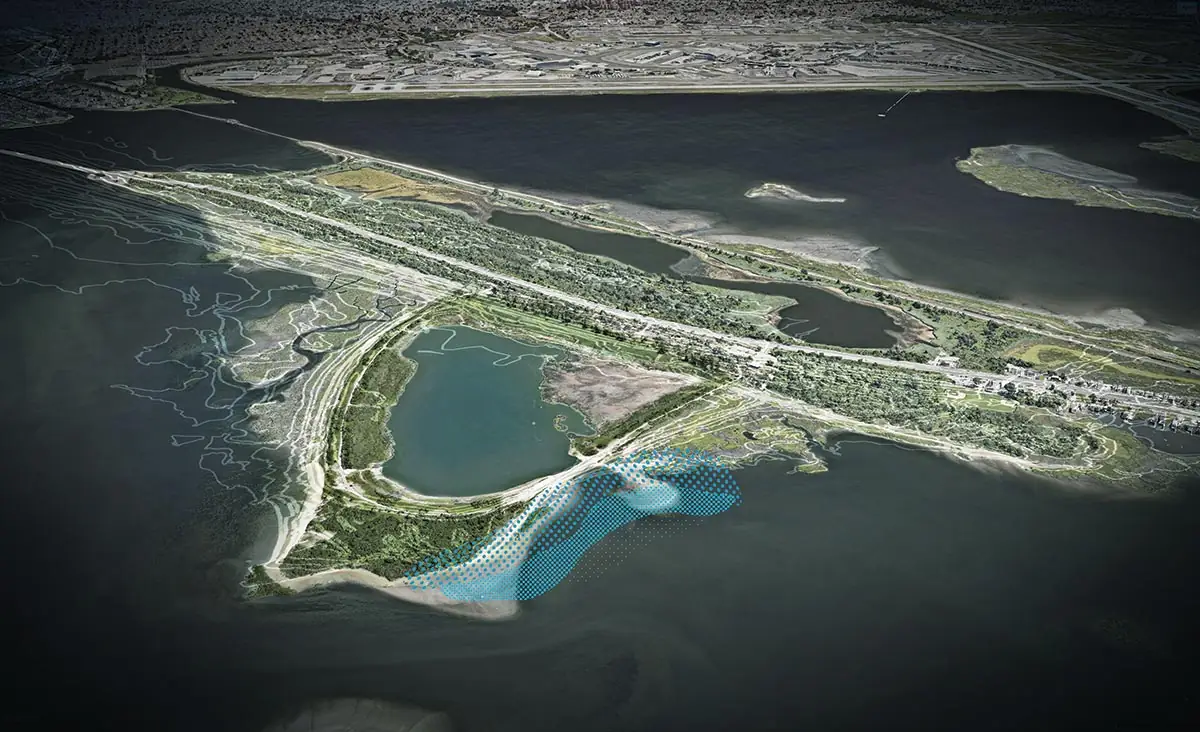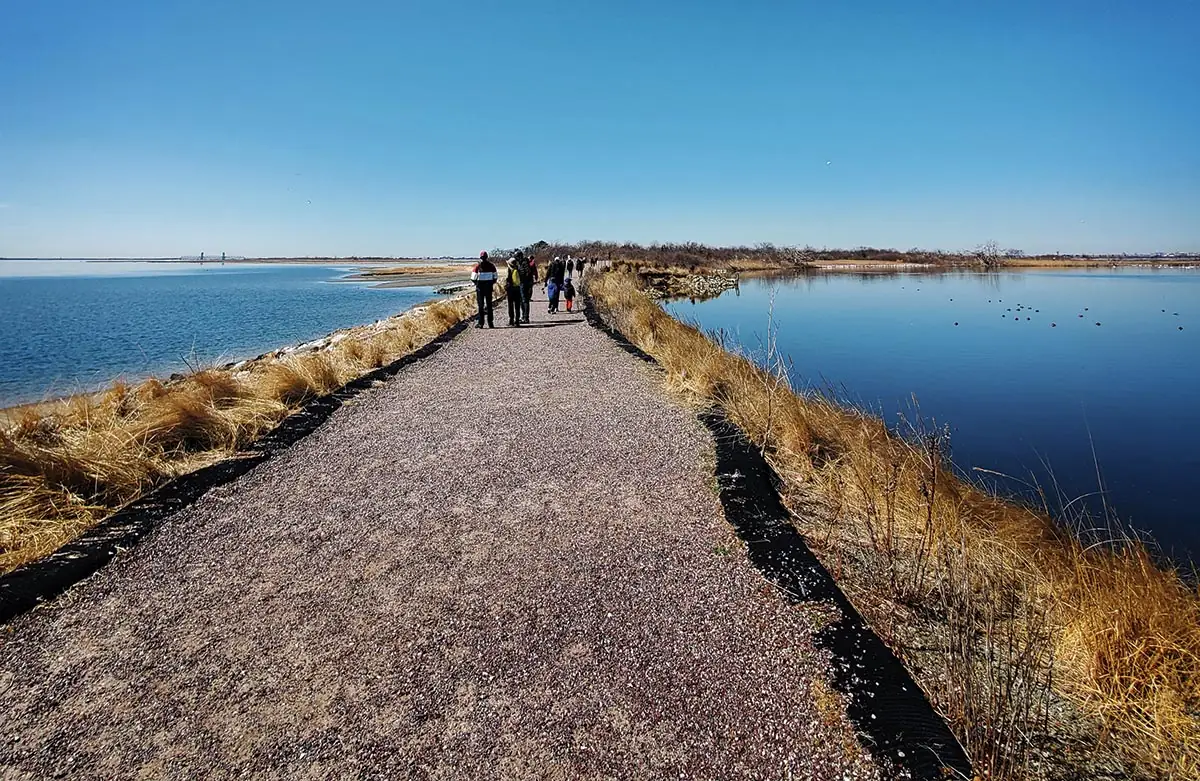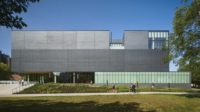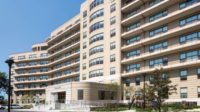Six years after Hurricane Sandy devastated New York in 2012, Dirtworks Landscape Architecture, in collaboration with Rippled Waters Engineering and Great Ecology environmental consultants, began a marsh restoration at the Jamaica Bay Wildlife Refuge. Part of the Gateway National Recreation Area located on the southwestern tip of Long Island in the boroughs of Brooklyn and Queens, the Refuge includes a 45-acre freshwater wetland called West Pond that nourishes Atlantic migratory birds, among other animals. The design team set out to reconstruct a 2,400-foot shoreline and restore 14 acres of tidal wetlands, while creating nine new ones. Completed in the fall of 2021, the West Pond: Living Shoreline project (winner of two American Society of Landscape Architects awards in 2022) offers various solutions for protecting and maintaining wildlife habitats amid increasingly intense global storms.

West Pond’s reconstructed shoreline and plan feature new plantings, repurposed sediment, and breakwater structures, to prevent erosion in new and restored habitats. Photo courtesy Dirtworks Landscape Architecture, click to enlarge.
Commissioned by Jamaica Bay-Rockaway Parks Conservancy, in partnership with the National Park Service, the West Pond project aims to protect this rehabilitated environment from future erosion, sea-level rise, and other such events exacerbated by the climate crisis. One component was to fix a dam breach between the freshwater lagoon and saltwater marsh (only temporarily repaired in 2017) that had not only destroyed animal habitats and plant life but also jeopardized a major freshwater source for the migratory birds. To remedy this, the team, led by Dirtworks’s senior landscape architect Britt Zuckerman, Rippled Waters’s marine engineer Mary Paist-Goldman, and professional biologist Cate Collinson (formerly at Great Ecology), introduced sediment and various breakwater structures. This was done “to attenuate wave action, and possible inundation from storm surges,” says Zuckerman. “The structures then help accrete soil, thereby protecting the shoreline and allowing the plantings to establish.”
Throughout the project, Dirtworks reused as many local materials and resources as possible: 70,000 cubic yards of capped landfill from the construction of the TWA Hotel at nearby JFK airport were filtered and repurposed to produce more than 50,000 cubic yards of sediment; recycled Christmas trees, sourced from residents of Rockaway, were used to fabricate fascines (branching systems knit together to collect sediment); and a combination of burlap sacks, coir-fiber bags, and oyster shells (collected from restaurants by local non-profit Billion Oyster Project) replicate the buffering capabilities of coral reefs. The landscape now comprises three zones: a low saltwater marsh, an intertidal zone, and an upland high marsh that features over 200,000 new native grasses and shrubs, such as salt-resistant saltmarsh cordgrass, pollinator-attracting goldenrod, and adaptable little bluestem.
The multipronged strategies used to restore West Pond endeavor to protect species like terrapins (small turtles), red knot birds, and horseshoe crabs. During the process, both professional and volunteer crew members remained vigilant for protected-animal sightings, built silt socks for erosion-control that doubled as barriers to keep turtles off roads, relocated the crabs, and installed fencing to fend off predatory geese. The Science and Resilience Institute at Jamaica Bay will continue to acquire data for long-term species monitoring.

The barrier that separates West Pond from Jamaica Bay had been breached during Sandy. Photo © Alex Zablocki
Repaired and enhanced, this natural habitat within the city, including the pond and 6,000 feet of the popular West Pond Loop trail, has reopened to the public. It is Zuckerman’s hope that community stewards from local advocacy groups will continue to be part of future efforts to protect natural sites against climate change. “Now, hopefully,” she says, “they will be engaged to do the next marsh-restoration project.”





Post a comment to this article
Report Abusive Comment